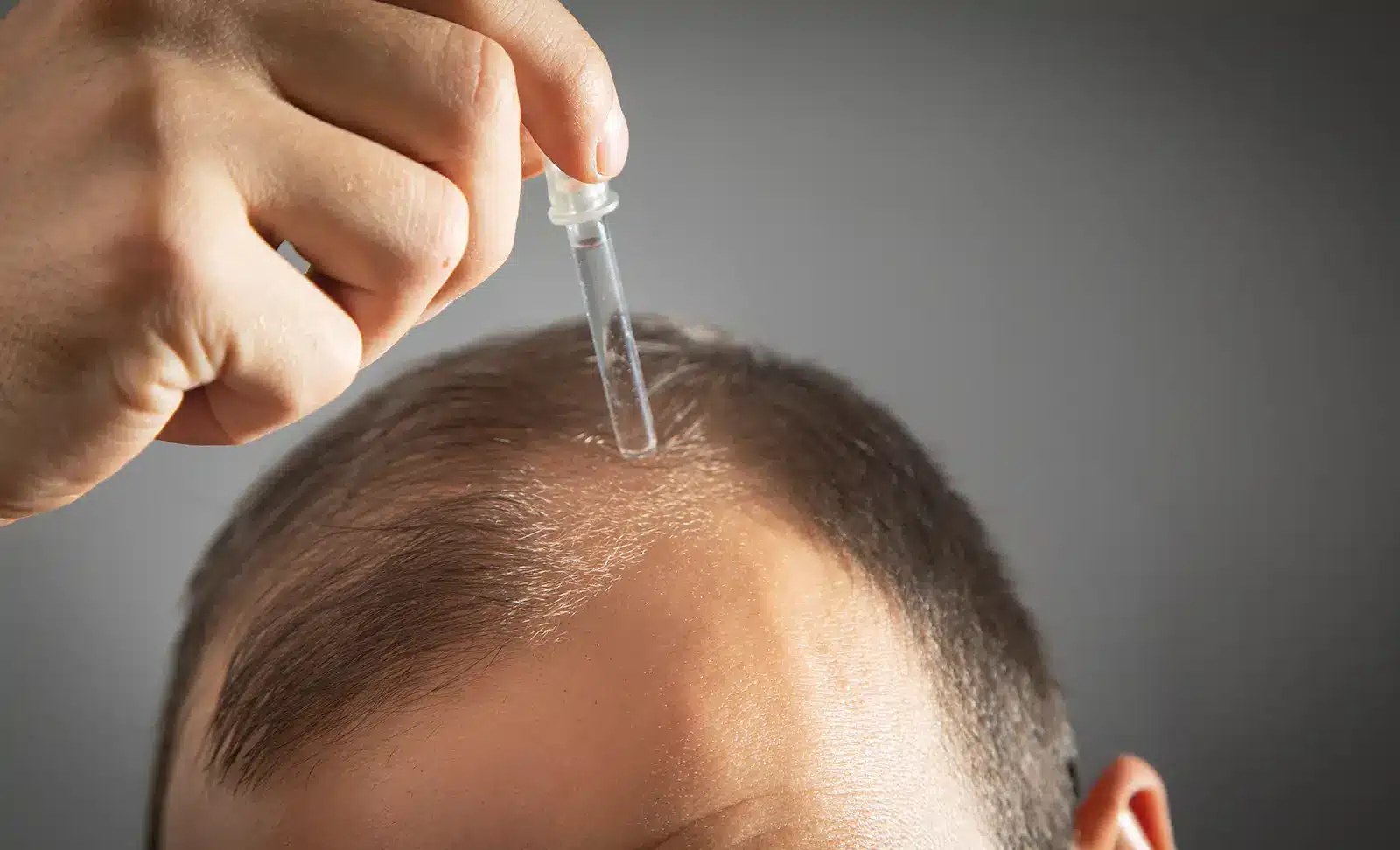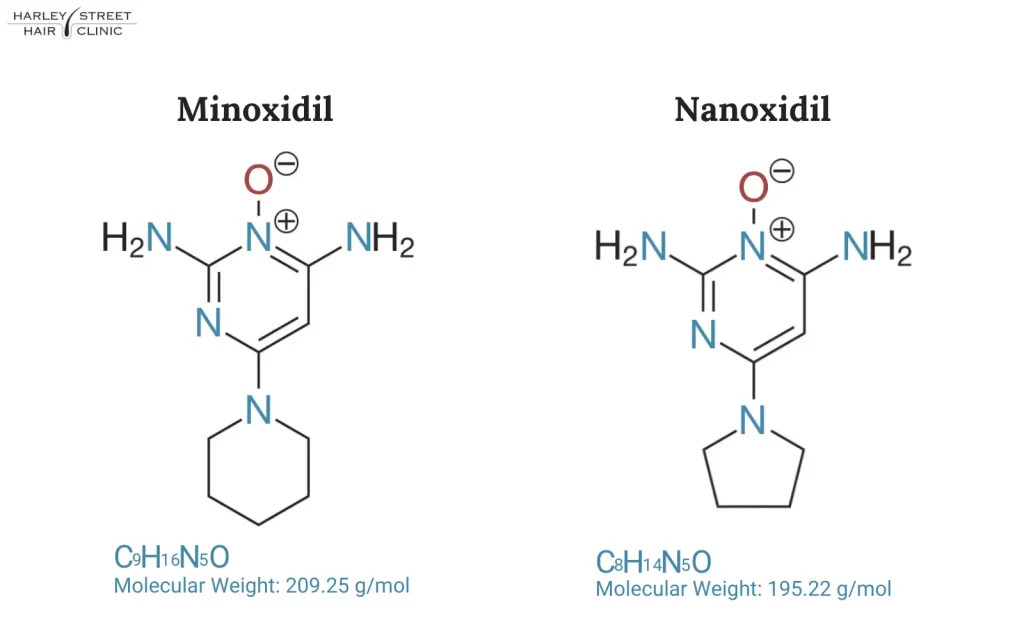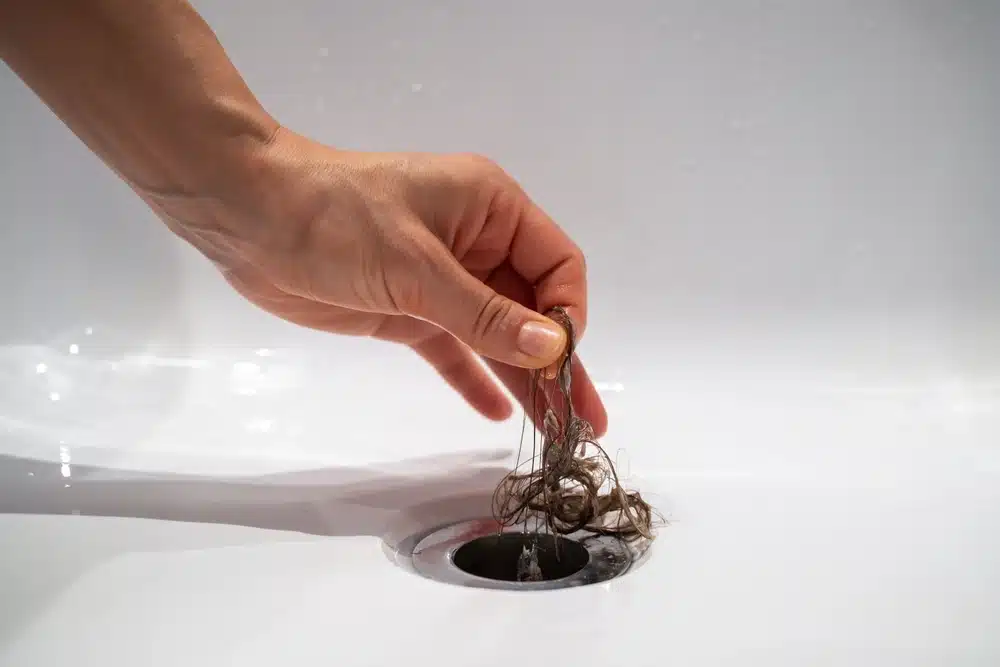Nanoxidil is an alternative to Minoxidil. It has a lot of the same structure as Minoxidil, but is a newer formula that could improve absorption, therefore potentially improving the results.
- What is Nanoxidil? Nanoxidil is a topical product used to stimulate new hair growth. It has very similar mechanisms to Minoxidil, but was formulated specifically to improve the penetration of the product.
- Can Nanoxidil Regrow Hair? Yes, Nanoxidil, much like Minoxidil, can help regrow hair. However, be aware that it is not currently FDA-approved (whereas Minoxidil is).
- How Do You Use Nanoxidil?: You must apply it to the scalp twice per day, leaving it on for around four hours each time to give it a chance to absorb.
- How Does Nanoxidil Work for Hair Growth? Nanoxidil is said to work by boosting blood flow to the hair follicles, which means they can grow healthier hair.
- Is Nanoxidil Better than Minoxidil? Nanoxidil was created to beat Minoxidil regarding absorption. However, Minoxidil has more research to back up its effectiveness and is FDA-approved.
If you have experienced hair loss at any point in your life, the chances are you have heard of minoxidil, the topical hair loss medication designed to target androgenetic alopecia. So, what about nanoxidil? Much like minoxidil, this is a topical treatment that treats hair loss, but does it work as well, and is it better than minoxidil? Find out everything you need to know right here.
What is Nanoxidil?
Nanoxidil was developed by DS Laboratories as an alternative to minoxidil. This company creates new, innovative, and effective hair restoration solutions.
Nanoxidil is very similar to minoxidil on a molecular level. However, there is one key difference: nanoxidil has fewer hydrogen atoms and one less carbon atom in its formula. As such, nanoxidil has a lower molecular weight compared to minoxidil.
It was developed this way because, theoretically, this lower molecular weight means the topical treatment can be absorbed into the skin faster and more easily, making it more effective.
Right now, there is zero evidence that nanoxidil works better than minoxidil. However, we know that nanoxidil works similarly to minoxidil in that it is a vasodilator, meaning it increases the size of blood vessels, boosting blood flow to the scalp. That means the hair follicles receive more oxygen and nutrients, creating a healthier environment for the hair to grow. They also both open potassium channels, which are present in the hair follicles.
Nanoxidil vs Minoxidil: Which is Better?
It is hard to say whether either is better than the other right now, as more research is necessary.
However, based on our current research, it looks like they both work similarly, with neither being superior. In one study testing nanoxidil on female pattern baldness, results showed that 75% of patients had an increase in hair density. [1] In another study looking at the effectiveness of 5% minoxidil on hair restoration, the treatment was effective in 74% of patients. [2] With only a 1% difference, there isn’t much between the two.
The Benefits of Using Nanoxidil
So, what are the benefits of using nanoxidil? Here are some advantages to using this topical treatment.
It Stimulates Hair Growth
As it’s nearly identical to minoxidil, you can rest assured that nanoxidil works effectively to stimulate hair growth. As a hair loss treatment, it works particularly well for androgenetic alopecia, helping both men and women restore their hair all over the scalp.
It May Penetrate the Skin Faster
Nanoxidil was developed to create a more effective hair loss treatment than minoxidil. With its lower molecular weight, it can theoretically penetrate the skin faster, leading to a more effective and faster treatment. This may mean more of the product can be absorbed before it evaporates.
Easy to Use
Much like minoxidil, nanoxidil is a topical treatment. It’s extremely easy to use – applying the solution to the affected areas daily.
You Don’t Need a Prescription
Unlike other hair loss medications (such as finasteride), you do not need a prescription to get nanoxidil. That means you needn’t go through the process of speaking to a doctor – you can simply decide to try it out.
Minimal Side Effects
The side effects produced by nanoxidil are not typically severe. We will go into the potential side effects below.
Potential Side Effects
Like with any medication, you should learn the side effects of nanoxidil before trying it for yourself:
- Scalp Irritation
- Dryness
- Redness
- Increased Oiliness
As you can see, these side effects are not too severe. However, it’s best to speak to a doctor or dermatologist if you experience these after using nanoxidil.
How to Use Nanoxidil
Using nanoxidil is, fortunately, very easy. All you need to do is apply the solution to the scalp twice daily, targeting the affected areas where you are experiencing hair loss. Leave the solution in (no need to rinse) and wash hands afterward.
When to Expect Results
It can take several months before you see the effects on hair density. Generally, it takes around three months for the first hairs to show through, and then another six to twelve months for full results. Of course, this differs slightly depending on the individual.
Do be aware that nanoxidil tends to cause hair shedding within the first month. This isn’t nanoxidil hair loss; this is a natural part of the process, and new hair will grow afterwards.
If you want to track your results, a hair track app can help you with that.
Should You Use Nanoxidil? What to Consider
You now know what nanoxidil is. The question is, should you try it for yourself? Here’s what to consider.
The Cause of Your Hair Loss: Nanoxidil is best for people with androgenetic alopecia. If you have another type of hair loss, such as traction alopecia or alopecia areata, it may not work as well for you.
If You’ve Tried Minoxidil: Have you already tried minoxidil? The chances are that if minoxidil does not work for you, nanoxidil might not either. However, it still might be worth testing out for yourself.
Cost: While nanoxidil might not seem expensive, it is ongoing. Be aware you’ll need to continue to purchase nanoxidil for as long as you want results to last.
Upkeep: As well as considering cost, consider the upkeep. While applying nanoxidil is straightforward, some people do not like applying a topical treatment twice a day for their hair to continue growing.
Other Hair Loss Treatments: Other hair loss treatments might suit your budget and lifestyle and cause more hair loss, so consider those before choosing nanoxidil.
Other Hair Restoration Options
Plenty of other topical treatments aim to reverse hair loss, from pumpkin seed oil to azelaic acid. Here, we have listed clinically proven hair restoration treatments that may greatly impact your strands.
Minoxidil
Minoxidil has already been mentioned, but it’s worth stating it as an alternative again here, as it’s an effective topical treatment. It works by increasing blood flow to the scalp, much like nanoxidil. You can often find it under the brand name Rogaine, which contains the active ingredient minoxidil. They have minoxidil for both men and women at various strengths.
Finasteride
Finasteride is an oral medication typically used to treat enlarged prostates, although you can get a prescription for hair loss. It works by blocking the androgen DHT, which is responsible for male pattern baldness. As such, it works well for treating this type of hair loss. Like minoxidil, you must continue using the medication for results to stick around.
Dutasteride
Dutasteride is very similar to finasteride, as it is a 5-alpha reductase inhibitor that reduces the levels of DHT in the body. This helps treat male pattern baldness. Dutasteride is more potent than finasteride, and you’ll need a prescription for this medication.
Non-Surgical Clinical Treatments
There are several great non-surgical clinical treatments available that can stimulate hair growth. These include PRP injections (platelet-rich plasma) and low-level laser therapy. PRP injections work by injecting blood back into the scalp, which helps as the growth factors within the platelets stimulate the follicles. Low-level laser therapy is a painless, non-invasive treatment that uses light to stimulate the follicles, leading to new hair growth.
Hair Transplant
Hair transplants are highly effective surgical procedures that involve transplanting follicles from one area of the scalp to another. The most recent methods, including FUE (follicular unit extraction) and DHI (direct hair implantation), are very advanced, offering extremely natural results with little scarring, so it doesn’t even look like patients have had the procedure. A hair transplant is more expensive than other hair loss treatments listed here, but the results last a lifetime and the success rate is extremely high, making it worthwhile to many.
If choosing to get a hair transplant, it is crucial to search for a reputable hair clinic in the UK with plenty of experience, and the team here at Harley Street Hair Clinic can help you there.
Nanoxidil UK: In Summary
Nanoxidil is a hair restoration option that works similarly to topical minoxidil, although more clinical studies are necessary to determine whether its slightly altered formula is more effective. It produces few side effects, and the research shows promising results, so it might be worth trying for those with female or male pattern baldness.
Do you want a more targeted, effective solution that is likely to let you regrow a full head of hair? If so, a hair transplant may be the better option, especially if you have already tried hair loss medications and found they don’t work as well as you’d like. If you want to learn more about what our expert hair specialists can achieve, head over to our patients gallery, and get in touch anytime to discuss your options.
Sources:
- https://pmc.ncbi.nlm.nih.gov/articles/PMC6489052/
- https://www.jaad.org/article/S0190-9622(03)03693-4/fulltext




